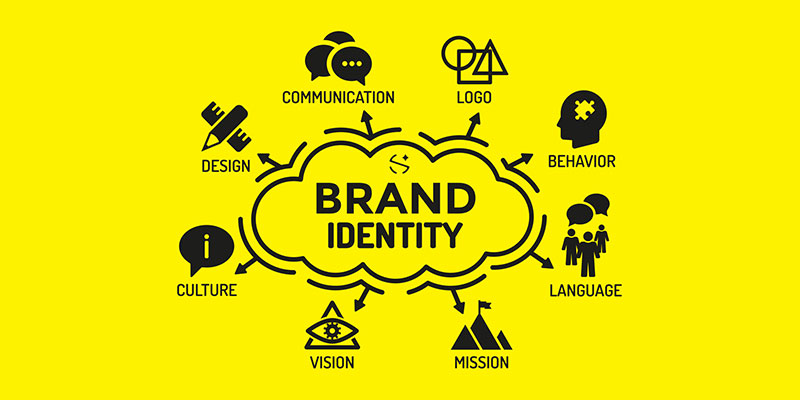Building a Brand Identity Through Web Design
In the digital era, brand identity web design is crucial for distinguishing your business from the competition and creating a lasting impression on your audience. A strong brand identity isn’t just about having a memorable logo or a catchy slogan; it’s about creating a cohesive and engaging experience that resonates with your target audience across every touchpoint. Web design plays a pivotal role in shaping and reinforcing this identity. Here’s how you can build a powerful brand identity through effective web design.

1. Define Your Brand’s Core Values and Vision
Before diving into web design, it’s essential to have a clear understanding of your brand’s core values and vision. What does your brand stand for? What are its mission and objectives? This foundational knowledge will guide your design decisions and ensure that every element of your website aligns with your brand’s identity.
- Mission Statement: Incorporate your mission statement into your website’s content and design. This statement should reflect your brand’s purpose and commitment to your audience.
- Core Values: Highlight your brand’s core values through imagery, messaging, and design elements. This helps visitors connect with your brand on a deeper level.
2. Craft a Memorable Visual Identity
Your website is often the first point of contact between your brand and potential customers. Creating a memorable visual identity involves:
- Logo Design: Ensure your logo is prominently displayed and easily recognizable. It should be scalable and work well across various devices and screen sizes.
- Color Scheme: Choose a color palette that reflects your brand’s personality and evokes the right emotions. Consistent use of color enhances brand recognition and reinforces your visual identity.
- Typography: Select fonts that align with your brand’s tone and are easy to read. Use typography to create a hierarchy of information and guide users through your content.
3. Create a Consistent Brand Voice
Consistency in brand voice helps establish a cohesive identity and build trust with your audience. Your website’s content should reflect your brand’s personality and communicate messages effectively. Consider the following:
- Tone and Style: Define the tone and style of your website’s copy. Whether it’s formal, casual, or playful, ensure it aligns with your brand’s character.
- Messaging: Craft messaging that clearly communicates your brand’s value propositions and resonates with your target audience. Use consistent language and key phrases throughout your site.
4. Design an Intuitive User Experience
An intuitive user experience (UX) is essential for maintaining a positive brand image. Your website should be easy to navigate, visually appealing, and responsive across all devices. Focus on:
- Navigation: Implement a clear and straightforward navigation structure. Ensure that users can easily find the information they’re looking for and move through your site seamlessly.
- Responsive Design: Optimize your website for mobile and tablet users. A responsive design ensures that your site looks and functions well on all screen sizes.
- Load Times: Optimize page load times to enhance user experience and reduce bounce rates. A fast-loading site reflects positively on your brand’s efficiency.
5. Utilize Engaging Visual Content
Visual content plays a significant role in reinforcing your brand identity. High-quality images, videos, and graphics can make your website more engaging and visually appealing. Consider:
- Brand Imagery: Use images and visuals that reflect your brand’s personality and values. Authentic and high-quality visuals help build trust and credibility.
- Video Content: Incorporate videos to showcase your products, share brand stories, or provide customer testimonials. Videos can enhance engagement and convey your brand’s message more effectively.
6. Incorporate Brand Storytelling
Brand storytelling is a powerful way to connect with your audience on an emotional level. Use your website to tell your brand’s story and highlight what makes you unique. Consider:
- About Us Page: Create an engaging “About Us” page that shares your brand’s history, mission, and values. Use storytelling techniques to make your brand’s journey relatable and memorable.
- Customer Stories: Feature customer testimonials and case studies that showcase the positive impact of your products or services. Authentic stories from real customers build credibility and trust.
7. Implement Strong Calls to Action (CTAs)
Effective web design includes strategically placed calls to action (CTAs) that guide users toward desired actions. Your CTAs should align with your brand’s goals and encourage engagement. Focus on:
- Clear Messaging: Use clear and compelling language in your CTAs. Tell users exactly what action you want them to take, whether it’s signing up for a newsletter, making a purchase, or contacting you.
- Visual Appeal: Design CTAs that stand out from the rest of your content. Use contrasting colors, bold typography, and eye-catching buttons to draw attention and drive conversions.
8. Ensure Brand Cohesion Across Platforms
Brand identity should be consistent across all digital and physical touchpoints. Ensure that your website aligns with your overall brand strategy and integrates seamlessly with other marketing channels. Consider:
- Social Media Integration: Reflect your brand identity on social media platforms by using consistent visuals, messaging, and tone. Link your social media profiles to your website to create a cohesive online presence.
- Offline Materials: Align your website design with offline materials such as business cards, brochures, and packaging. Consistent branding across all platforms reinforces your brand’s identity and creates a unified experience for your audience.
9. Analyze and Refine Your Design
Building a strong brand identity through web design is an ongoing process. Regularly analyze your website’s performance and gather feedback from users to identify areas for improvement. Use website analytics to track:
- User Engagement: Monitor metrics such as bounce rates, time on site, and conversion rates to evaluate the effectiveness of your design and identify areas for optimization.
- Feedback: Gather feedback from users through surveys, reviews, and usability testing. Use this information to make informed design adjustments and enhance the overall user experience.
10. Stay Updated with Design Trends
The digital landscape is constantly evolving, and staying updated with the latest design trends can help keep your brand identity fresh and relevant. While maintaining brand consistency is essential, incorporating modern design elements can enhance user experience and keep your website competitive.
By focusing on these strategies, you can build a compelling and cohesive brand identity through web design that resonates with your audience, reinforces your values, and sets you apart from the competition.

